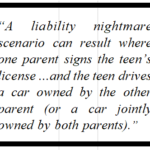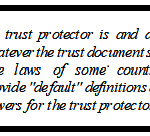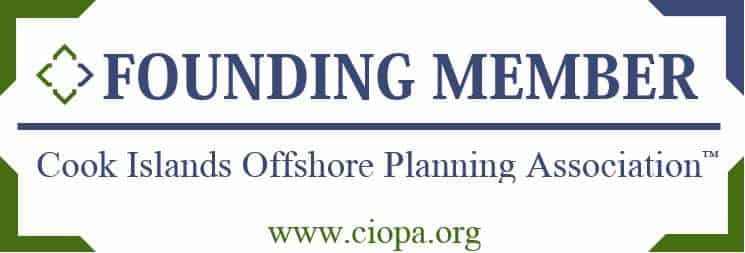Rush University Case: What Could Have Been Done Differently?
Volume XXI, Number 1 – JANUARY 2013
INTRODUCTION
A 2012 Illinois Supreme Court case, Rush University Medical Center v. Sessions (CLICK HERE FOR FULL TEXT OF CASE), has been touted as proof that asset protection trusts, especially offshore trusts, do not work. In this issue we will clarify and enlighten our readers as to why that particular offshore trust failed to protect assets, and we will point out what could and should have been done differently so that the protective planning would have worked as intended.
BACKGROUND
The impetus for the litigation was an unfulfilled irrevocable pledge of $1.5 million made to the University by Mr. Sessions in 1995. Based upon this pledge (which Mr. Sessions reiterated and provided for in his subsequent will and codicils), the University constructed a building which it dedicated to Mr. Sessions despite never having received any actual funding from him. In 1994, prior to making this pledge, Mr. Sessions settled an irrevocable trust (Sessions Family Trust) which he funded with Illinois real estate and a 99% limited partnership interest in a Colorado FLP. The Sessions Family Trust was governed by Cook Islands law, and, as permitted under that law, Mr. Sessions was a beneficiary of the trust as well as the protector. In 2005, having made no payments on the pledge, Mr. Sessions was diagnosed with terminal cancer. Mr. Sessions blamed the doctors at the University for not diagnosing his cancer early enough to be able to take effective action.
As a result, Mr. Sessions revoked his will and all codicils which had provided funding for the pledge. He died shortly thereafter. The University sued the trust (in Illinois) on several grounds. Ruling in favor of the University, the Illinois Supreme Court relied on the principle “that if a settlor creates a spendthrift trust for his own benefit, it is void as to existing or future creditors and such creditors can reach the settlor’s interest under the trust.” Although this principle has been abrogated in a number of states (and in the Cook Islands), it seems clear that a U.S. based asset protection trust would have fared no better in this case. As stated, under Illinois law, the trust was void, thus making all trust assets available to satisfy the University claim (at least in theory). Had he been alive throughout the litigation, Mr. Session’s position as trust protector might have caused him other trouble (See, APN, Volume VII • Number 2).

EFFECTIVE PLANNING.
Why didn’t this trust protect its assets? More than an asset protection trust governed by Cook Islands law is required to protect assets. The planner must understand how a creditor can reach trust assets. A creditor can reach trust assets in only two ways: The creditor must bring his/her case in a court which has jurisdiction over the trustee or the creditor must bring his/her case in a court which has jurisdiction over trust assets. If the creditor brings the case in a court which has jurisdiction over the trustee, the court can simply order the trustee to pay over the assets to satisfy the creditor’s claim. If the creditor brings the case in a court which has jurisdiction over the trust assets, the court can seize the trust assets for the benefit of the creditor. Properly structured offshore asset protection planning vitiates the first possibility, but if trust assets are located in the U.S. (like the Illinois real estate and the Colorado FLP), the latter option remains a viable method by which a creditor can reach trust assets.
What can be done to make the latter option less “viable”? Make the U.S. situs assets not worth going after. How can you make an asset “not worth going after”? Remove its value. After all, if an asset has a minimal value, a rational economic evaluation makes it unattractive (not economically worth going after). How do you remove an asset’s value? You encumber it – you use it as collateral for a loan (from an unrelated lender). If you then deposit the loan proceeds in your offshore trust, you have essentially moved the value of the immovable asset offshore – beyond the jurisdiction (reach) of the U.S. court (this is referred to as “equity stripping”, and it has proven effective against even a U.S. government agency).
Think about it: If you were considering suing someone and the only asset they had was a parcel of real estate which was 95% encumbered, how likely would you be to pursue the matter? Had that type of strategy been employed by Mr. Sessions early on in his planning (you can’t implement it as a last ditch effort – at least not with reputable lenders) a decidedly different outcome would have been likely. However, in this case, there were assets located in the United States (Illinois real estate and the FLP interest) with a value sufficient to satisfy the University’s claim: Case closed.

CONCLUSION.
Except as mentioned above, the case was not clear regarding whether there were any other assets held in the trust. It is highly doubtful that if liquid assets (cash and publicly traded securities) were directly held in the trust in offshore accounts that the University would have been able to satisfy any part of its claim from those assets, although the opposite is true with regard to assets (real property in particular) located in Illinois. Equity stripping planning is the only effective technique to implement protection for immovable assets. For more on this type of planning, see, APN Volume XI • Number 3. Use experienced, qualified counsel to advise you of your options.
Donlevy-Rosen & Rosen, P.A. is law firm with a national practice focused on asset protection planning and offshore trusts. Attorneys Howard Rosen and Patricia Donlevy-Rosen co-founded the firm in 1991, and have since become internationally recognized authorities in the field of asset protection planning. Send a message using our contact page



















Connect
Connect with us on the following social media platforms.